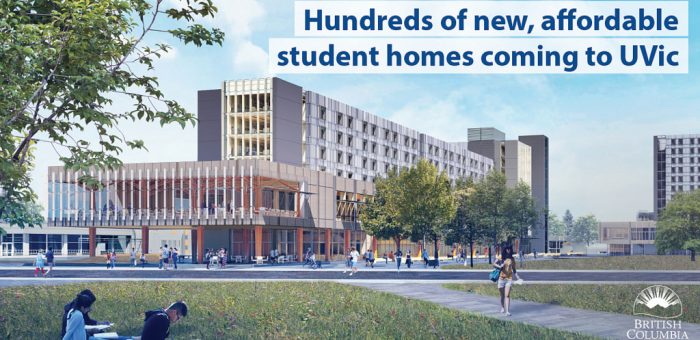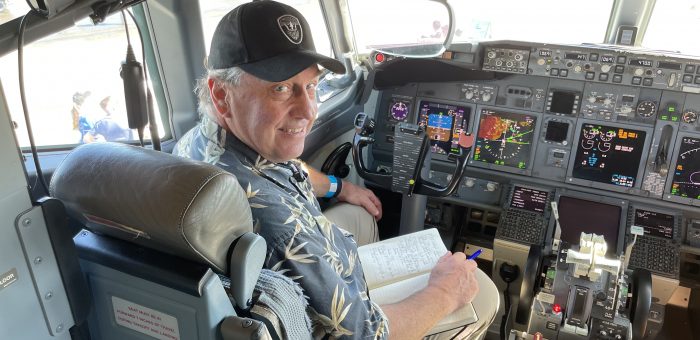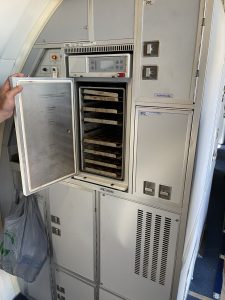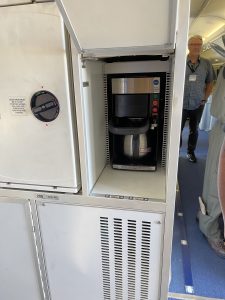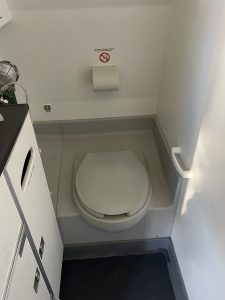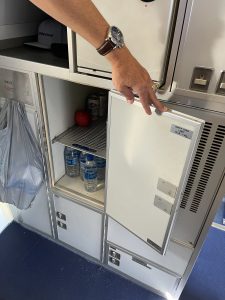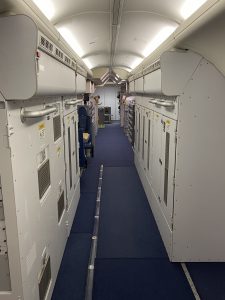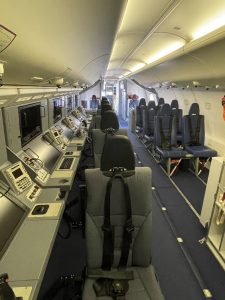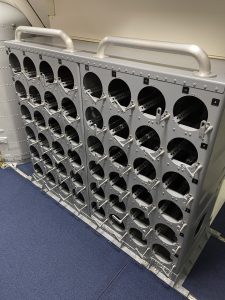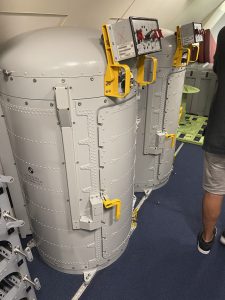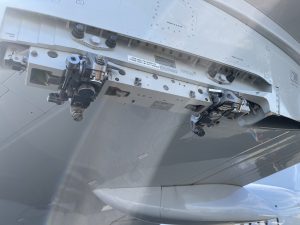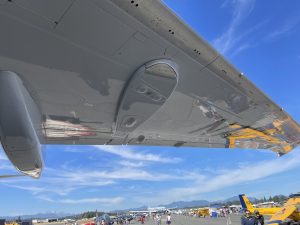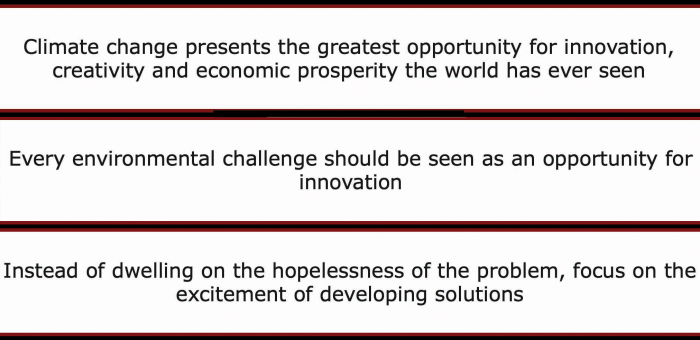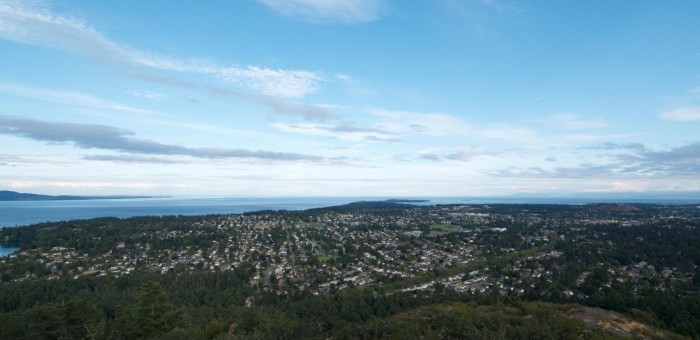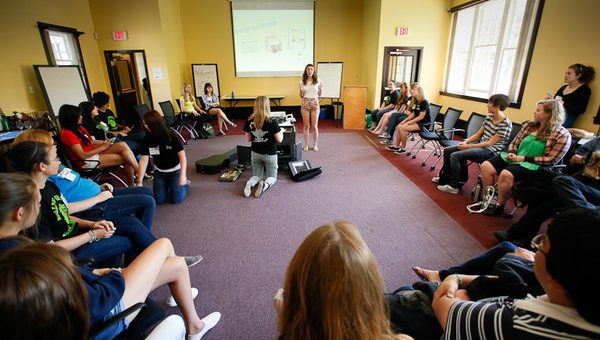Issues & Community Blog - Andrew Weaver: A Climate for Hope - Page 3
Advancing lasting policy through good governance
It’s election season here in the CRD and true to form, political rhetoric is escalating. In the City of Victoria, for example, there is an ongoing divisive debate over the so-called Missing Middle Housing Initiative. Younger generations affected by the rental crisis and the lack of affordable housing are being pitted against homeowners (often assumed to be from an older generation).
In my view, the debate is not actually focused on the key questions that need to be answered:
- Will the proposed initiative address the issue of affordability? In other words, is the proposed solution meeting a desired outcome?
- Is the initiative being advanced in a way that brings people with you in the process?
- What is the role of council and why is this new initiative required?
Compelling arguments are being advanced in support of both sides of the first question and some believe that this is where the public controversy arises. In my view, it isn’t.
The term “missing middle housing”, was first coined by Daniel Parolek in 2010 and expanded upon in his book Missing middle housing : Thinking big and building small to respond to today’s housing crisis, published in 2020. It’s defined as “house-scale buildings with multiple units in walkable neighbourhoods”, and it was designed to address sprawling US car-dependent communities.
Many I have spoken with have long supported the notion of missing middle housing, without knowing the slogan. In fact, successive Victoria councils have a longstanding track record of allowing for, and even promoting, such developments. One only need drive along Shelbourne Street to find myriad townhouse developments built in recent years, or travel along Rockland Avenue to witness stately mansions from the early 1900s that have been preserved and transformed into multi-family units.
Moving to question 2, I believe the answer is demonstrably no. In general, any policy consultation process that ends up pitting one group against another is destined to divide rather than unite our community. And that is what we are seeing in the missing middle debate in my view.
Such societal polarization is often reinforced by some in the so-called progressive movement who ironically don’t realize that their communication/activism tactics are quite similar to those employed by elements of the alt right. These include being intolerant of opposing views, making assertions – not grounded in evidence – to justify a cause, attacking people who disagree with them on social media, and civil disobedience to hopefully increase public awareness to their cause. Groups that are intolerant of the views of others, whether they be on the left or the right, ultimately just reinforce British Columbia’s longstanding reputation for societal polarization and pendulum politics.
Pendulum politics occurs when an angry electorate mobilizes, often egged on by an opposition party/individual or parties/individuals, to unseat those holding elected positions. Consequently, local, provincial and federal governments get summarily turfed out in elections and the party or individual(s) on the other side of the political spectrum form government or the majority on council. More often than not, the so-called baby is thrown out with the bathwater as the new government or council begins to undo the work of the previous government or council to fulfill their election campaign promises.
One solution to ongoing pendulum politics is to put in place a form of proportional representation like what already exists in more than 90 countries, and the majority of western democracies, worldwide. At the council level, this translates to a ward system that ensures unique neighbourhoods within a municipality are properly represented at the council table. Regional District electoral systems already operate on a ward system. For example, the Cowichan Valley Regional District has representation from 9 different electoral areas; the Nanaimo Regional District has representation from 7 different electoral areas.
But we have neither of these systems in place, and so we must work within the system that we have. And this brings me to question 3.
Local governments are created under British Columbia’s Local Government Act and municipalities, such as Victoria or Saanich, are empowered by British Columbia’s Community Charter which provides:
- “a legal framework for the powers, duties and functions that are necessary to fulfill their purposes,
- the authority and discretion to address existing and future community needs, and
- the flexibility to determine the public interest of their communities and to respond to the different needs and changing circumstances of their communities.”
Obviously, zoning is one of the most important functions of an elected council. The biggest issue with the missing middle initiative is that council are proposing to pass a highly divisive, one-time, city-wide zoning change a few days before the next civic election. Associated with the initiative is the delegation of development approval to staff. In essence, Mayor and Council would be able to deflect any political accountability to their staff.
Mayors and their councils are elected to represent and meet the needs of those residing within each of our unique and diverse neighbourhoods. They are elected to listen to all residents, not just their political supporters, as they propose and approve policies that unite, rather than divide, our communities.
In my view council have chosen to abdicate their public, and hopefully transparent, decision-making process to staff who are not accountable to the electorate. In addition, it makes little sense for Victoria, with a population of only 85,792 (2016 census), the seventh most densely populated (4,406 people per square kilometre — 2016 census) municipality in Canada, to pretend they can go it alone to solve the affordability issue in our region. What is needed is a coordinated regional housing strategy.
It strikes me that what we are witnessing is divisive politics instead of good governance, especially since such an important issue is being debated just over a month before the next local government elections with virtually all the present council having declared that they are not seeking re-election. Who will be held accountable for a decision on the Missing Middle Initiative? Nobody. The truth is, council have already been implementing and could further expand upon, the issue of missing middle housing if good governance was placed ahead of divisive political posturing.
Another example, which serves to illustrate just how dysfunctional the recent decision-making process on Victoria council is concerns the recent pronouncement that all new construction from 2025 must be “zero carbon” producers by 2025. This means that the era of oil, gas or propane heating is over in new construction in Victoria. As someone who has been speaking out publicly on the need to reduce GHG emissions since the early 1990s, obviously I support this policy. In fact, CleanBC, British Columbia’s climate action plan, already requires the same throughout BC by 2030. But once more, the way Victoria council brought this forward is almost a textbook example of what not to do to advance climate policy. While other jurisdictions are exploring similar proposals for early adoption, Victoria decided to go it alone amid rising affordability, inflation concerns and a divisive debate on the Missing Middle Housing Initiative.
How processes like this play out is predictable. A new Mayor and Council recognize that the previous Mayor and Council had lost the confidence of the electorate. As evidence for this one only need read the results of the recent governance survey where 81% of respondents stated that they were dissatisfied or very dissatisfied with Victoria’s governance. Despite losing the confidence of the electorate, council still decided to debate or pass controversial motions at the 11th hour thereby blindsiding many in our community because the important groundwork to bring people with you was not done in advance. And so pendulum politics kicks in and a new Mayor and Council start to undo the work of the previous Mayor and Council in order to repair the divides within our community.
We’ve seen this happen before in British Columbia. When Premier Campbell brought in the HST without bringing the electorate along with him it spelled the end of his leadership. Now even uttering the words HST is political suicide. This, despite when coupled with a low-income HST rebate program (as was proposed), this form of consumption taxation many would argue represents good fiscal policy.
Earlier in the mid 2000s, on the other hand, Premier Gordon Campbell, his Finance Minister Carole Taylor, and his Environment Minister Barry Penner introduced some of the most innovative climate action policies anywhere. Their flagship policy was British Columbia’s much celebrated revenue neutral carbon pricing. Not only did the general public support Premier Campbell’s climate policies, but they also punished the BC NDP in the 2009 provincial election for not formulating their own climate plan and cynically campaigning behind an “Axe the [carbon] tax” slogan.
As someone was who was born and grew up in the City of Victoria, I am saddened by what I perceive to be the emergence of divisive sociopolitical discourse, activism, and politicking at the expense of inclusive governance. Good governance means governing for all, not just your supporters; it means bringing people together, not pitting one generation against another; and it means listening to the views of all, even people you may not agree with, and doing what you can to address (not dismiss) those concerns.
For those who may have wondered, I will not be seeking a council, mayoral or school board seat in the forthcoming civic election. Admittedly, I very seriously considered seeking a council seat in the District of Saanich, the community in which I have lived since 1992, and a community that exemplifies the notion of good governance.
In my next post I hope to expand upon what I have written here but with a specific focus on climate policy. I’ll build upon my personal experience as someone who has been actively engaged in the areas since the late 1980’s/early 1990’s.
Sustainable Aviation Fuel — Opportunities for Innovation in Aviation Sector
With the summer holiday season coming to an end, and after hearing no end of COVID-related horror stories (delays, cancelled flights, staff shortages, passport issues) from friends and family who decided to travel by air to destinations afar for the first time in several years, I thought I would spend some time exploring climate solutions in the aviation sector.
the summer holiday season coming to an end, and after hearing no end of COVID-related horror stories (delays, cancelled flights, staff shortages, passport issues) from friends and family who decided to travel by air to destinations afar for the first time in several years, I thought I would spend some time exploring climate solutions in the aviation sector.
As I noted in my recent presentation to the BC Aviation Council May Conference 2022, Transportation in the aviation sector affects our climate through two main ways. The first, and most obvious, is via the emissions of greenhouse gases associated with the combustion of jet fuel. In 2020, international (not including domestic) aviation was the 10th biggest total emitter of carbon (171.15 Megatonnes) world wide (behind China, USA, India, Russia, Japan, International Shipping, Germany, Iran and South Korea). In total, aviation accounts for about 2.5% of global emissions of carbon dioxide.
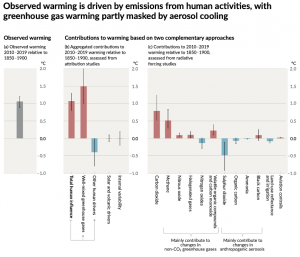 The second main way that aviation affects the climate system is through the creation of contrails. Contrails occur when moisture in jet exhaust condenses in the high altitude cold ambient environment to create lines of thin cirrus clouds, comprising ice crystals, whose net effect is to warm the Earth further. While innovation in flight path planning is ongoing in an effort to reduce contrail formation, off the shelf solutions to replace jet fuel appeared elusive, until recently.
The second main way that aviation affects the climate system is through the creation of contrails. Contrails occur when moisture in jet exhaust condenses in the high altitude cold ambient environment to create lines of thin cirrus clouds, comprising ice crystals, whose net effect is to warm the Earth further. While innovation in flight path planning is ongoing in an effort to reduce contrail formation, off the shelf solutions to replace jet fuel appeared elusive, until recently.
On August 6 and 7, 2022 I attended the Abbotsford Air Show to learn about innovation in the aviation industry and the use of sustainable aviation fuel (SAF), sometimes known as biojet fuel. I was quite excited by what I discovered as it appears that Canada is uniquely positioned to be an international leader in this area.
It was evident to me that the aviation industry is deeply concerned about their greenhouse gas emissions and that they are investing heavily in carbon-neutral technology pathways. While we can expect to see the increasing use of electric engines, hydrogen fuel cell technology and even potentially hydrogen combustion from onboard cryogenic storage tanks, these will likely only be available for commuter, regional and short haul flights (<120 minute with < 150 passengers) over the next decade or two. Unfortunately, such short-haul flights only account for about 27% of global carbon dioxide emissions from the aviation sector whereas medium and long haul flights account for the remaining 73%. And so, if we want to reduce emissions from the aviation sector over the next few decades, widespread adoption of SAF made from renewable organic waste will be required.
A number of companies, including Neste, Lanzajet and World Energy have either been recently established or are already heavily invested in producing SAF using renewable ethanol from waste (such as cooking oil) as an initial focus. Of course, establishing sustainable supply chains for organic waste that don’t involve food stocks (e.g. Canola) or limited supplies of cooking oil will be needed if SAF is to scale up globally. Other companies (e.g., Licella, Ensyn, Steeper Energy etc.) are also heavily invested in exploring the potential of non-food source related waste (e.g. from forestry, municipal waste, sewage, waste plastic etc.) as feed stock for renewable fuels.
 And herein comes the potential opportunity for British Columbia and Canada.
And herein comes the potential opportunity for British Columbia and Canada.
First, the University of British Columbia’s Department of Wood Science is already considered an international leader in biofuel research and hosts the British Columbia Sustainable Marine, Aviation, Rail and Trucking (BC-SMART) consortium. British Columbia and Canada are well positioned to capitalize on investments in research and innovation in this sector.
Second, British Columbia has no shortage of wood or other organic waste that could potentially sustain domestic supply chains for biofuel production.
Third, wood waste, such as slash piles left behind after logging activities have concluded, are often either burnt in situ, left to decompose, or eventually act as a fuel source for wild fires. Removing this waste and converting it to biofuel has significant environmental co-benefits.
Fourth, wood waste is distributed throughout British Columbia, and in particular rural BC. Capitalizing on the opportunities afforded by the harvesting of wood (or other organic) waste would provide distributed economic opportunities for indigenous and non-indigenous communities across our province.
In 2018 I wrote extensively about the challenges and opportunities associated with greenhouse gas reductions in British Columbia. In particular, I noted that embedded in the confidence and supply agreement that I signed with the BC NDP in 2017 was the following commitments:
Climate Action
-
- Implement an increase of the carbon tax by $5 per tonne per year, beginning April 1, 2018 and expand the tax to fugitive emissions and to slash-pile burning;
- Deliver rebate cheques to ensure a majority of British Columbians are better off financially than under the current carbon tax formula;
- Implement a climate action strategy to meet our targets.
While British Columbia is on track to dramatically reduce its greenhouse gas emissions in the years ahead associated with our Clean BC climate plan, one of the policy commitments we didn’t deliver on was an expansion of the carbon pricing to slash pile burning. This is important since if a price is attached to slash emissions, an incentive is created to avoid this potential liability and so forestry (and other) companies would be given an economic reason to extract slash from forest operations. Such a price could be set directly (on emissions) or indirectly (via regulation) as was done for fugitive emissions in the oil and gas sector.
So in summary, it strikes me that the sustainable fuel sector for long haul transportation represents an incredible opportunity for innovation that British Columbia and Canada can capitalize on. The economic, environmental and social benefits of investments in this area appear to be far-reaching.
Coming back to the Abbotsford Air Show, one of the planes that I toured was the Boeing P-8A (pictured above). The P-8A is a military plane designed for long-range reconnaissance, surveillance, and submarine detection missions. And here is why this is important.
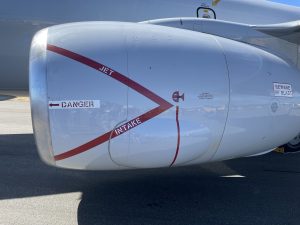 Canada is in the final stages of a procurement process:
Canada is in the final stages of a procurement process:
“To equip the Canadian Armed Forces with a long-range manned Command, Control, Communications and Computers (C4) and Intelligence, Surveillance and Reconnaissance (ISR) and Anti-Submarine Warfare (ASW) aircraft with extended capabilities to replace the CP-140 Aurora.”
The Boeing P-8A represents a solution that may meet the needs of this procurement. Why this is interesting is that the P-8A is already capable of operating on 50% SAF and Boeing has committed to meet a 100% SAF capability by 2030.
Touring the P-8A felt like I was exploring a repurposed Boeing 737 for good reason! The P-8A has a Boeing 737-800 body, 737-900 wings, a 737 cockpit and a 737 engine with a substantive increase in available electrical power. Fully 86% of the commercial components within the P-8A are common with Boeing’s 737 series, the world’s most prevalent passenger jetliner.
Figure: Four images taken inside the Boeing P-8A illustrating its galley and washroom similarities with the Boeing 737 passenger jetliner.
While I do not have the expertise to assess the military capabilities of the P-8A, I learned that 156 of them with over 450,000 logged flight hours, are in military use worldwide (in the US, India, UK, Norway, Germany, Australia, New Zealand and South Korea).
Figure: Four images taken inside the Boeing P-8A showing its military workstations and the sonobuoy storage/release systems
Figure: Two images of the underside of the Boeing P-8A wing indicating wing pylons that allow for the attachment of up to 3,000 lb weapons.
What excited me most about my tour of the Boeing P-8A at the Abbotsford Airshow is that I came away with a sense of optimism and hope for the future of the aviation industry. Imagine the potential for the Canadian military to show international leadership by investing in a sustainable replacement for its CP-140 Aurora fleet that would create a local market for sustainable air fuels produced from locally-sourced slash and other organic waste. While scaling up the use of SAF in the global aviation industry remains a challenge, Canada can do its part positioning itself as a early adopter and international leader in the area.
Moving on from Provincial Politics: A Climate for Hope
To bring closure to my 7 1/2 years as an MLA for Oak Bay-Gordon Head and 5 years as leader of the BC Green Party I felt it was important to add this video to my archived MLA website. Moving forward, I plan to continue my work on climate solutions on the local, provincial, national and international level.
This YouTube video was produced by Robert Alstead, the same person who created the documentary “Running on Climate”. That documentary provided an inside look into the 2013 election campaign set within a greater climate change narrative.
This YouTube video might be of interest to some as it gives insight as to why I got into and out of politics. The book that I refer to in this video has the working title: “A Climate for Hope” and not “A Vehicle for Change”.
Thank you to the Residents of Oak Bay-Gordon Head
With the announcement yesterday that the province is heading into a general election on October 24, my term as the MLA for Oak Bay Gordon Head has come to an end. This will be my last post on my MLA website.
I would like to thank you, the constituents of this fabulous riding, for extending me the great honour of serving you these last 7 1/2 years. It has been a very rewarding experience for me and I have been so very fortunate to have worked with outstanding constituency staff over this period. If you have contacted my constituency office, you too will have had first hand experience working with these exceptional individuals.
Thank you Judy Fainstein, Perry Fainstein, Devon deLarge, Allie deLarge, Rory Hills, Sarah Miller, Teresa Hartrick and Huxley Johnson.
Over the years I also had the privilege of working with first rate legislative staff. I was first elected in May 2013 and our small but mighty legislative team immediately immersed itself into building a BC Green presence in the BC Legislature. Thank you Taylor Hartrick, Evan Pivnick, Matt Wright, Sarah Miller, Claire Hume, Aldous Sperl and Judy Fainstein for your support during my first term: 2013 – 2017.
With the 2017 election delivering a minority BC NDP government and the BC Greens holding the balance of power, our legislative team grew. I remain grateful to the hard work of Liz Lilly, Macon McGinley, Judy Rendek, Stephanie Siddon and the legislative interns and volunteers who supported our office over the years.
Of course, I would never have been elected were it not for the hard work of the literally hundreds of volunteers who helped me in the 2013 and 2017 election campaigns. I ran on a promise to bring climate policy back to the forefront in BC. And with the establishment of CleanBC, I feel my work is done.
Finally, thank you to the candidates who have stepped forward to seek your vote to represent you as the MLA for Oak Bay Gordon Head in the upcoming election. From the quality of the candidates stepping forward, it is clear to me that our riding will be in good hands moving forward, regardless who wins the upcoming race.
Thank you again.
Andrew
Celebrating youth in our community – Olivia Friesen
This is the twenty-seventh installment in our series on exceptional youth where we celebrate the outstanding achievements of youth in the Oak Bay-Gordon Head riding. As we commence this chapter in our series we have chosen to celebrate the accomplishments of two sisters in Oak Bay, Olivia and Anna Friesen. These inspirational young adults are enriching our lives with their passion and commitment to the betterment of society.
Olivia Friesen
 Although many younger siblings would feel overwhelmed by the pressure of having an older sister as accomplished as Anna Friesen, Olivia has elected to view her older sister as a role model while still managing to distinguish herself as a different but no less remarkable young individual.
Although many younger siblings would feel overwhelmed by the pressure of having an older sister as accomplished as Anna Friesen, Olivia has elected to view her older sister as a role model while still managing to distinguish herself as a different but no less remarkable young individual.
In grade nine Olivia obtained marks of 100% in Social Studies and Science, 99% in math, and 96% in English. This past year, she followed up her incredible academic performance in her freshman year with an overall average in the upper 90s.
 Like her older sister, Olivia is a multidimensional athlete who has found success in nearly every sport she has decided to attempt. Last season, Olivia played on Oak Bay’s elite U16 Vancouver Island Premiere League team (which won their division) and was an important part of the high school junior girls’ team. She is also an excellent field hockey player who is a valuable member of school’s team and has been chosen to participate in the Rising Stars Elite Training Program. To top it off, Olivia runs the 100, 200, and 400 metre dash for the school’s track and field team and competes in long jump, triple jump, and pole vault.
Like her older sister, Olivia is a multidimensional athlete who has found success in nearly every sport she has decided to attempt. Last season, Olivia played on Oak Bay’s elite U16 Vancouver Island Premiere League team (which won their division) and was an important part of the high school junior girls’ team. She is also an excellent field hockey player who is a valuable member of school’s team and has been chosen to participate in the Rising Stars Elite Training Program. To top it off, Olivia runs the 100, 200, and 400 metre dash for the school’s track and field team and competes in long jump, triple jump, and pole vault.
 When she was in grade five, Olivia began playing the cello and has evolved to become an integral part of the Oak Bay High School Orchestra. In grade 9, her hard work and dedication was acknowledged by the Orchestra who decided to give her the Most Improved Strings Player Award. Additionally, while at Monterey Middle School, Olivia decided to take up playing the trumpet and is a now a member of the Oak Bay High School Concert Band.
When she was in grade five, Olivia began playing the cello and has evolved to become an integral part of the Oak Bay High School Orchestra. In grade 9, her hard work and dedication was acknowledged by the Orchestra who decided to give her the Most Improved Strings Player Award. Additionally, while at Monterey Middle School, Olivia decided to take up playing the trumpet and is a now a member of the Oak Bay High School Concert Band.
 Despite her young age, Olivia has found numerous ways to give back to the local community and is an active member of the school’s environment club. This past year she helped to organize the rubber ducky race, volunteered as a Christmas gift wrapper for the Mustard Seed, and served as a volunteer for the school’s annual Cops for Cancer campaign. In previous years, Olivia has participated in restoration projects at Bowker Creek and Anderson Hill Park. When she was in grade nine, she was one of just six students in her year selected to participate in the Live Different program and would have travelled down to Mexico during spring break to build two houses for disadvantaged families if not for COVID-19.
Despite her young age, Olivia has found numerous ways to give back to the local community and is an active member of the school’s environment club. This past year she helped to organize the rubber ducky race, volunteered as a Christmas gift wrapper for the Mustard Seed, and served as a volunteer for the school’s annual Cops for Cancer campaign. In previous years, Olivia has participated in restoration projects at Bowker Creek and Anderson Hill Park. When she was in grade nine, she was one of just six students in her year selected to participate in the Live Different program and would have travelled down to Mexico during spring break to build two houses for disadvantaged families if not for COVID-19.
As her membership in the school’s environment club would indicate, Olivia is interested in climate change and conservation which she may pursue academically down the road in university. In line with her interests in environmental science, she cites science teacher Derek Schubsole as positive academic influence in her life.
 Throughout the COVID-19 pandemic Olivia has done her best to stay positive and keep a daily routine, but like many others, misses the personal interactions that form an important part of her everyday life. She’s looking forward to the start of the new school year after spending the summer working in the Kiwanis Willows Tea room.
Throughout the COVID-19 pandemic Olivia has done her best to stay positive and keep a daily routine, but like many others, misses the personal interactions that form an important part of her everyday life. She’s looking forward to the start of the new school year after spending the summer working in the Kiwanis Willows Tea room.
Given her personal drive and natural talent in so many different areas, we believe that Olivia is destined to continue being a high achiever whose work impacts the lives of numerous others.

